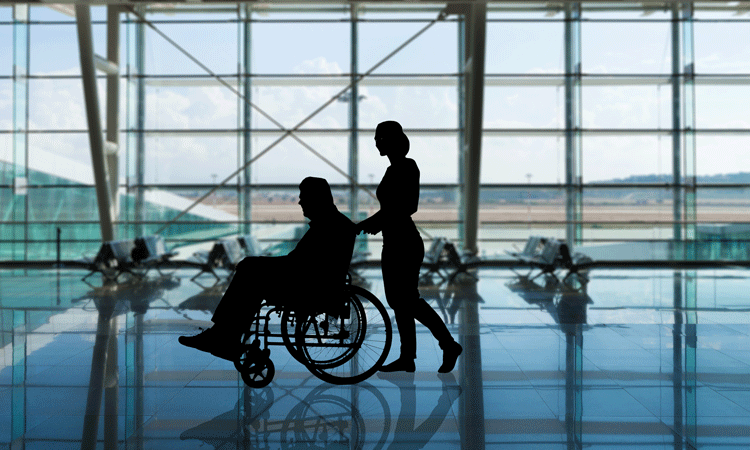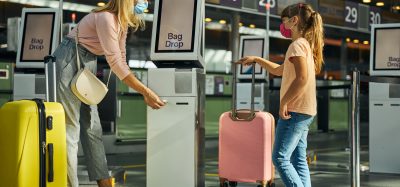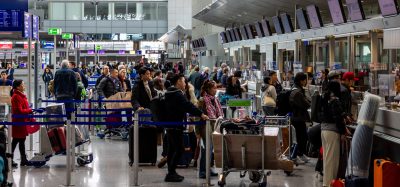Improving accessibility in Brazilian civil aviation
- Like
- Digg
- Del
- Tumblr
- VKontakte
- Buffer
- Love This
- Odnoklassniki
- Meneame
- Blogger
- Amazon
- Yahoo Mail
- Gmail
- AOL
- Newsvine
- HackerNews
- Evernote
- MySpace
- Mail.ru
- Viadeo
- Line
- Comments
- Yummly
- SMS
- Viber
- Telegram
- Subscribe
- Skype
- Facebook Messenger
- Kakao
- LiveJournal
- Yammer
- Edgar
- Fintel
- Mix
- Instapaper
- Copy Link
Posted: 29 November 2021 | Joana Grosskopf, Sheila Strack | No comments yet
Joana Grosskopf, Senior Analyst and Sheila Strack, Air Transportation Facilitation Co-ordinator from the Civil Aviation Secretariat of the Brazilian Ministry of Infrastructure tell International Airport Review about the work they are doing on the Accessible Aviation Project with UFScar University.


Disability is part of the human condition and, historically it is a great challenge to include people with disabilities in a world that still does not meet all diversity needs. People with disabilities are a considerable portion of the population and despite progress in recent decades in understanding what disability is and what the rights of people with disabilities are, this population still faces numerous barriers that limit their activities and restrict their participation in different environments and life situations.
Universal accessibility
People with disabilities are entitled, like any other citizen, to access services with dignity, including air transport.”
Seeking the elimination of all possible barriers existing in an environment or service is also called “universal accessibility”. Accessibility guarantees the safe and autonomous use of environments and services by all people, not just people with disabilities. For instance, signs well positioned associated with accessible information at an airport can be useful for deaf, someone with intellectual disabilities or for a foreigner tourist. Therefore, when thinking about universal accessibility, the target audience benefited is not only someone with disability, but also elderly, children, somebody pushing a baby stroller or a luggage cart, among others.
Brazil went through a great process of learning and improving this issue by hosting the Paralympic Games in 2016. Although the country has already been the scene of major events, such as the World Cup and the Olympic Games. The Paralympic Games represented the biggest challenge in the sector, especially when considering the number of Paralympic athletes in the same flight that required assistance.
Once Rio de Janeiro was confirmed as the host of the games, the Civil Aviation Secretariat started planning the event aiming to receive all athletes suitably. This planning took a long time and involved many partners such as other government agencies that operate in the airports, airlines, airport managers, among others.
It was a source of great pride for everyone involved when, in a single day, Galeão Airport (SBGL) received approximately 60,000 passengers, with more than 4,500 members of the Paralympic Family and around 830 wheelchair athletes. It´s a huge volume, especially when compared to a usual day. The event was a success and had a lot of positive feedback from the athletes.
Another step forward
Given all this learning provided throughout the planning, in addition to the opportunities for improvement, the Civil Aviation Secretariat felt prepared to take another step towards improving accessibility at Brazilian airports, not only related to issues of physical barriers, but also highlighting the operational management side.
Considering this scenario, the Brazilian government has been part of an important partnership with a renowned national university (UFScar), and taking account with support from airports, airlines, and organisations in the sector. They have been developing a broad study whose main objectives are:
- Carrying out studies, research, and diagnostics, aiming the improvement of accessibility in the civil aviation sector
- Learning with the international benchmarking the best parameters in service, infrastructure and services related with accessibility
- Encouraging accessibility improvements.
As for the identification of the best international practices, the use of assistive technologies is sought, plus adequate and efficient training, as well as a manual compiling the best practices known in situations at various points, such as entry and exit in aircraft, receiving and checking baggage, check-in, among other situations in which a person with disability or special needs require assistance. It is also noteworthy that for each practice placed, the costs of projects, execution and equipment involved will also be included, as well as alternatives to minimise previous impacts and others that could exist. Furthermore, the evaluation of the improvement, comparing impacts and benefits.
Best practice for airports
A diagnosis of the current situation related to accessibility in Brazilian civil aviation is also being carried out, from the initial stages, such as when a customer needs some assistance in purchasing a ticket until leaving the airport. In addition, the research seeks to establish guidelines, criteria and indicators that guide future actions in the sector, disseminating the results of this study nationwide, in search of excellence in serving passengers with disabilities.
All this work will culminate in the preparation of a Brazilian Operational Manual containing the best practices to serve as a guide for the airports and airlines regarding dealing with users in need of assistance in all their steps. Furthermore, distance course material for training airport operators and anyone involved in travel process of users with any need for assistance will also be produced.
Seeking to encourage the sector to adopt the best practices proposed in this study, a Quality Assessment Model for airlines and airports is being proposed. This valuation intends to regard the application of the manual and the assessment of adherence of real practices. Thereby, it is possible to verify in practice, the level of adherence to the manual of the process in the airports and airlines, as service providers to the person in need of assistance.
The level of adhesion will be marked with seal of quality. Because it is not possible to obligate airports and airlines to adopt the proposed methodology, the idea is to propose a rewarding system so those involved will be given an accessibility seal. Thus, it is expected that those involved in the process will work to obtain those seals, and to increase their position in the ranking, therefore generating competition in the sector and generating improvements for everyone involved.
Improved benchmarking
As for the results, we expect to improve the benchmarking in the sector, both national and international good practices, run a general diagnostic, and disseminate the Civil Aviation Best Practices Handbook that will support the Brazilian airports at the improvement of access to transportation and minimise obstacles for passengers with disabilities and reduced mobility. The project will last 48 months and is currently in its final phase.
The project reinforces the promoting accessibility in civil aviation, ensuring the rights of all people to travel safely and independently. Therefore, it presents methods, procedures and instruments that identify the factors that create difficulties and the facilitating factors for people with disabilities during the travel cycle. The goal is to support users, airlines and airport operators to understand, learn and meet the needs of people with disabilities during all stages of travel and facilitate the work with this public.




Issue
Related topics
Accessibility, Airport development, Passenger experience and seamless travel, Passengers with reduced mobility (PRMs), Regulation and Legislation, Safety, Terminal operations

















